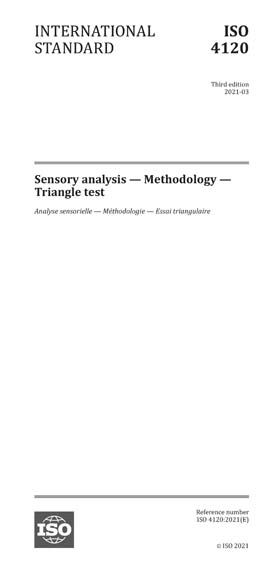Most recent
ISO 4120:2021
Sensory analysis - Methodology - Triangle test
This document specifies a procedure for determining whether a perceptible sensory difference or similarity exists between samples of two products. The method is a forced-choice procedure. The method is applicable whether a difference exists in a single sensory attribute or in several attributes.
The method is statistically more efficient than the duo-trio test (described in ISO 10399), but has limited use with products that exhibit strong carryover and/or lingering flavours.
The method is applicable even when the nature of the difference is unknown [i.e. it determines neither the size nor the direction of difference between samples, nor is there any indication of the attribute(s) responsible for the difference]. The method is applicable only if the products are homogeneous.
The method is effective for:
a) determining that:
- either a perceptible difference results (triangle testing for difference);
- a perceptible difference does not result (triangle testing for similarity),
when, for example, a change is made in ingredients, processing, packaging, handling or storage;
b) selecting, training and monitoring assessors.
Content Provider
International Organization for Standardization [iso]






